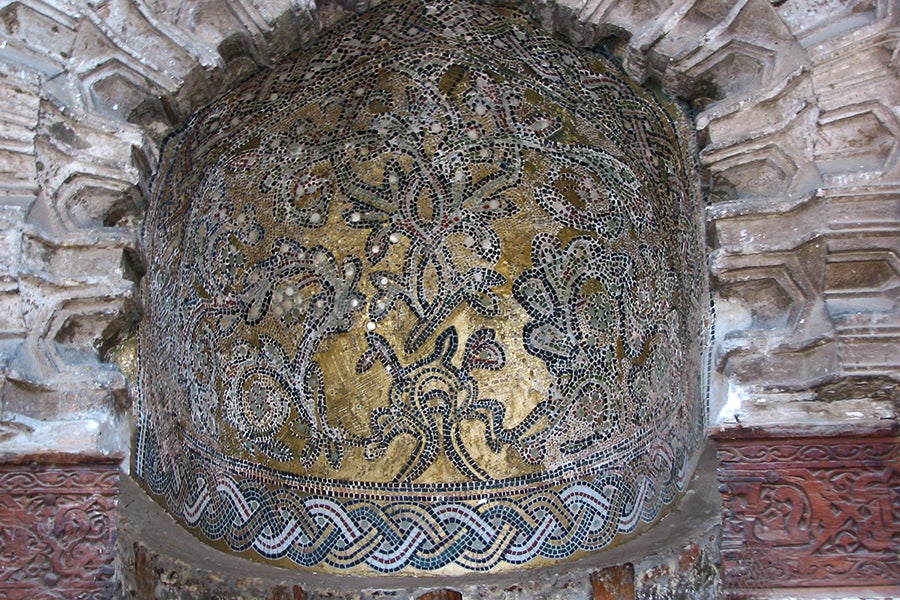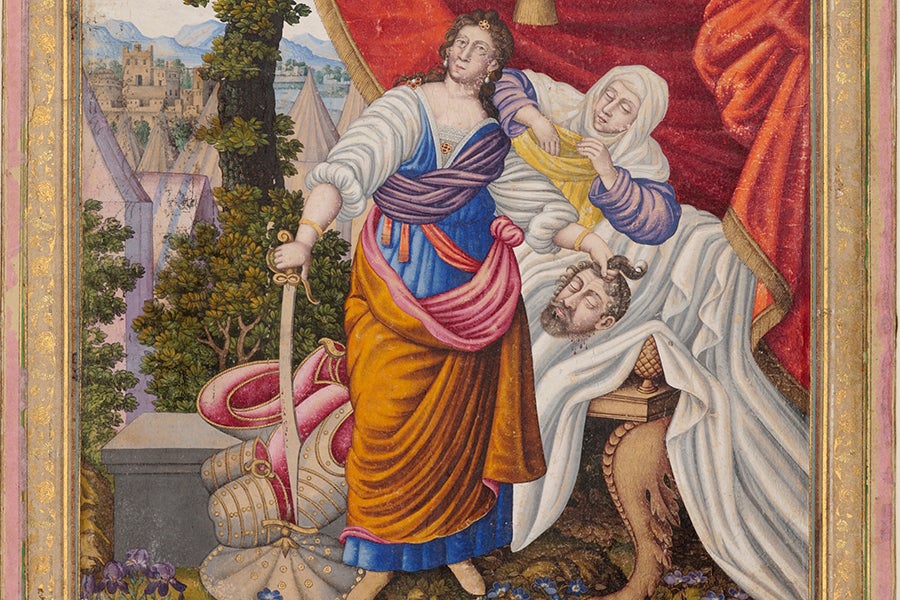Images of the Virgin Mary in Mughal Art Mika Natif Synopsis: The Virgin Mary (Maryam) became a popular image among the Mughal ruling elite from the late 16th to the mid-17th century. Her depiction appears in single-page pictures set in albums, on wall paintings in Mughal palaces, and within illustrated manuscripts. This presentation focuses on…
Tag: Women
Madrasat al-Firdaws in Aleppo
Madrasat al-Firdaws in Aleppo Yasser Tabbaa Synopsis: Founded in 632/1235 by the Regent Queen Dayfa Khatun, the Madrasat al-Firdaws impresses us today by its female patronage, architectural merits, and by its long and unique inscriptions. Its eleven domes and magnificent mihrab emulate similar features in the earlier Shi‘i Mashhad al-Husayn while its exterior iwan, once…
Mongol Women’s Court Dress
Mongol Women’s Court Dress Eiren Shea Synopsis: This talk discusses Mongol women’s court dress, the formal attire worn by elite Mongol women across the Empire in the 13th and 14th centuries. It focuses in particular on the form of the tall hat worn by elite married women, the boqta, and the wide court robe. Through…
Tree of Pearls: Shajar al-Durr and her Architectural Patronage
Tree of Pearls: Shajar al-Durr and her Architectural Patronage D. Fairchild Ruggles Synopsis: In the mid-thirteenth century, Shajar al-Durr—or “Tree of Pearls”—rose from slavery to become the first female sultan of Egypt, and ultimately the first in what would become the Mamluk line of sultans. With wealth and political power, she built innovative tombs for…
The Depiction of European Women in Late Safavid Paintings
The Depiction of European Women in Late Safavid Paintings Negar Habibi Synopsis: This talk presents a group of 17th-century Persian paintings made in the farangi-sazi or Occidentalist style. It focuses in particular on depictions of females whose iconography is of European origins. Inspired by the print medium, some of these compositions recall Persian depictions of…






